#artemis mission
Text
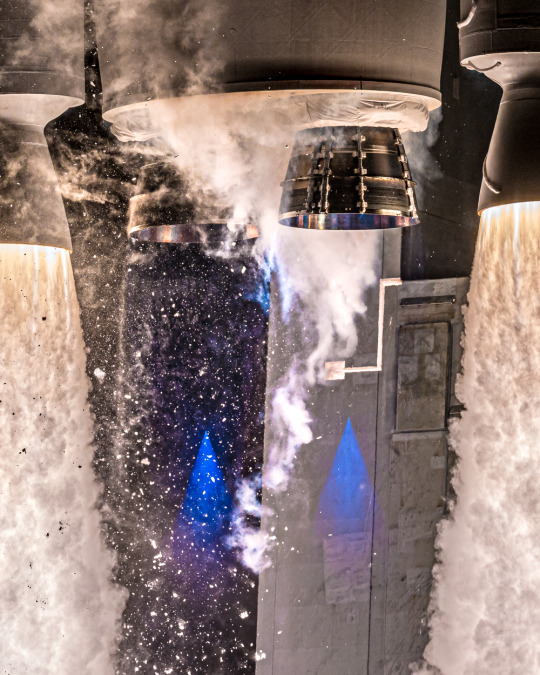

Liftoff of ULA Vulcan l John Kraus
l First U.S. commercial robotic launch to the Moon l ULA(United Launch Alliance) l more info at NASA
#rocket launch#vulcan#ULA#astrophotography#nasa#artemis mission#moon#science#stars#solar system#astronomy#galaxy#planet#cosmos#universe#sky
634 notes
·
View notes
Text
If I had a nickle for every time the launch of the new moon mission was delayed by a hurricane, I'd have two nickles. Which isn't a lot, but it's weird that's happened twice in about a month.
Is the rocket summoning the storms? Are the storms trying to stop the rocket? We just don't know.
1K notes
·
View notes
Text
The Lunar Environment Monitoring Station (LEMS) is one of the first three potential payloads NASA selected for the Artemis 3 mission, which will land humans on the moon in 2026 for the first time in more than 50 years.
The compact, autonomous seismometer is designed to withstand the long, cold lunar night and operate during the day, continuously monitoring ground motion from moonquakes in the region around the lunar south pole, where Artemis 3 astronauts will land. LEMS is expected to operate on the lunar surface for at least three months and up to two years, demonstrating its capability to measure the moon's geophysical activity unassisted over long periods of time, according to a statement from NASA.
Continue Reading.
33 notes
·
View notes
Text
I'm still not over the Odysseus moon lander, and I don't think I ever will.
I've always had a varying interest in space for as long as I can remember, and Greek Mythology has always had a special place in my heart. With both colliding in such a unique way, it tickles me pink.
But why did it have to be like this...
Odysseus is one of my favorite characters from the myths. The Odyssey brings me to tears every time I read it. It's a beautiful story of determination to return home again despite the possibility of rejection and how much has changed. It means so much to me that this story has gotten so much recognition in recent years, but why like this?
Why this lander? Why this lander when its only fate is to fizzle out and be forgotten? Why this lander that was sent away forever? Why this lander that will never return to its creators or home?
Why this lander that will die cold and alone?
From the interviews and reporting I've seen, the engineers and scientists were fond of the lander. They talk about it with affection. They gave it a nickname.
"Odie"
So I wonder... Did they know?
Did they know what that name means? The name Autolychus gave to that squirming babe in his arms. His grandson. The name of the king who would achieve feats that will be sung for centuries, millennia. The name of the man whose return would be synonymous with a long journey.
Do they know they named this first return to the moon in 50 years "hatred"? And do they realize that by leaving the lander to die, they fulfill the true meaning of that name?
#char ramblings#odysseus#odysseus lander#space#nasa#moon landing#artemis mission#char writes#why am i sobbing over a really expensive hunk of metal and circuits? ;-;
28 notes
·
View notes
Text
Y'ALL!! I was exploring NASA's website (as one does) and I found out THAT WE'RE GOING BACK TO THE MOON?? And soon!! We're going back to the Moon in TWO YEARS and the mission is called Artemis (because ofc it is I love those nerds)!! Like, how cool is that?? We're living to see ppl walking on the Moon (again!!!)!!
#WAIT A EFFING SECOND#IT'S NOT JUST THE ARTEMIS MISSION BC THEY'RE GOING TO THE MOON#IT'S THE ARTEMIS MISSION BC ITS THE S I S T E R MISSION TO THE OG APOLLO MISSION!!!!#IT'S THE TWIN ARTEMIS-APOLLO MISSIONS TO THE MOON!!#those clever bastards#moon#moon appreciation#nasa#just yelling into the void#artemis mission
23 notes
·
View notes
Text

Been awhile since I drawn an Astronaut 🚀
12 notes
·
View notes
Text
From the Moon’s south pole to an ice-covered ocean world, several exciting space missions are slated for launch in 2024
by Ali M. Bramson, Assistant Professor of Earth, Atmospheric, and Planetary Sciences at Purdue University
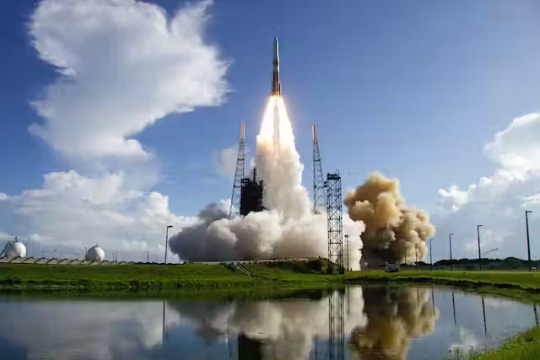
The year 2023 proved to be an important one for space missions, with NASA’s OSIRIS-REx mission returning a sample from an asteroid and India’s Chandrayaan-3 mission exploring the lunar south pole, and 2024 is shaping up to be another exciting year for space exploration.
Several new missions under NASA’s Artemis plan and Commercial Lunar Payload Services initiative will target the Moon.
The latter half of the year will feature several exciting launches, with the launch of the Martian Moons eXploration mission in September, Europa Clipper and Hera in October and Artemis II and VIPER to the Moon in November – if everything goes as planned.
I’m a planetary scientist, and here are six of the space missions I’m most excited to follow in 2024.
1. Europa Clipper
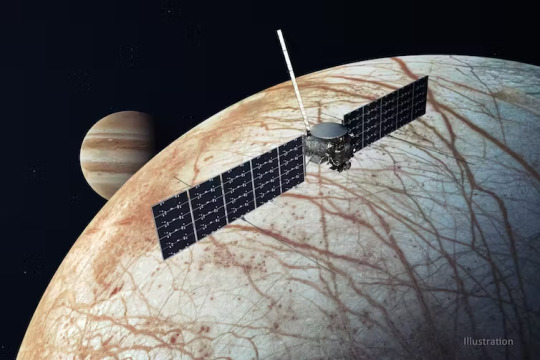
NASA will launch Europa Clipper, which will explore one of Jupiter’s largest moons, Europa. Europa is slightly smaller than Earth’s Moon, with a surface made of ice. Beneath its icy shell, Europa likely harbors a saltwater ocean, which scientists expect contains over twice as much water as all the oceans here on Earth combined.
With Europa Clipper, scientists want to investigate whether Europa’s ocean could be a suitable habitat for extraterrestrial life.
The mission plans to do this by flying past Europa nearly 50 times to study the moon’s icy shell, its surface’s geology and its subsurface ocean. The mission will also look for active geysers spewing out from Europa.
This mission will change the game for scientists hoping to understand ocean worlds like Europa.
The launch window – the period when the mission could launch and achieve its planned route – opens Oct. 10, 2024, and lasts 21 days. The spacecraft will launch on a SpaceX Falcon Heavy rocket and arrive at the Jupiter system in 2030.
2. Artemis II launch

The Artemis program, named after Apollo’s twin sister in Greek mythology, is NASA’s plan to go back to the Moon. It will send humans to the Moon for the first time since 1972, including the first woman and the first person of color. Artemis also includes plans for a longer-term, sustained presence in space that will prepare NASA for eventually sending people even farther – to Mars.
Artemis II is the first crewed step in this plan, with four astronauts planned to be on board during the 10-day mission.
The mission builds upon Artemis I, which sent an uncrewed capsule into orbit around the Moon in late 2022.
Artemis II will put the astronauts into orbit around the Moon before returning them home. It is currently planned for launch as early as November 2024. But there is a chance it will get pushed back to 2025, depending on whether all the necessary gear, such as spacesuits and oxygen equipment, is ready.
3. VIPER to search for water on the Moon
youtube
VIPER, which stands for Volatiles Investigating Polar Exploration Rover, is a robot the size of a golf cart that NASA will use to explore the Moon’s south pole in late 2024.
Originally scheduled for launch in 2023, NASA pushed the mission back to complete more tests on the lander system, which Astrobotic, a private company, developed as part of the Commercial Lunar Payload Services program.
This robotic mission is designed to search for volatiles, which are molecules that easily vaporize, like water and carbon dioxide, at lunar temperatures. These materials could provide resources for future human exploration on the Moon.
The VIPER robot will rely on batteries, heat pipes and radiators throughout its 100-day mission, as it navigates everything from the extreme heat of lunar daylight – when temperatures can reach 224 degrees Fahrenheit (107 degrees Celsius) – to the Moon’s frigid shadowed regions that can reach a mind-boggling -400 F (-240 C).
VIPER’s launch and delivery to the lunar surface is scheduled for November 2024.
4. Lunar Trailblazer and PRIME-1 missions

NASA has recently invested in a class of small, low-cost planetary missions called SIMPLEx, which stands for Small, Innovative Missions for PLanetary Exploration. These missions save costs by tagging along on other launches as what is called a rideshare, or secondary payload.
One example is the Lunar Trailblazer. Like VIPER, Lunar Trailblazer will look for water on the Moon.
But while VIPER will land on the Moon’s surface, studying a specific area near the south pole in detail, Lunar Trailblazer will orbit the Moon, measuring the temperature of the surface and mapping out the locations of water molecules across the globe.
Currently, Lunar Trailblazer is on track to be ready by early 2024.
However, because it is a secondary payload, Lunar Trailblazer’s launch timing depends on the primary payload’s launch readiness. The PRIME-1 mission, scheduled for a mid-2024 launch, is Lunar Trailblazer’s ride.
PRIME-1 will drill into the Moon – it’s a test run for the kind of drill that VIPER will use. But its launch date will likely depend on whether earlier launches go on time.
An earlier Commercial Lunar Payload Services mission with the same landing partner was pushed back to February 2024 at the earliest, and further delays could push back PRIME-1 and Lunar Trailblazer.
5. JAXA’s Martian Moon eXploration mission
youtube
While Earth’s Moon has many visitors – big and small, robotic and crewed – planned for 2024, Mars’ moons Phobos and Deimos will soon be getting a visitor as well. The Japanese Aerospace Exploration Agency, or JAXA, has a robotic mission in development called the Martian Moon eXploration, or MMX, planned for launch around September 2024.
The mission’s main science objective is to determine the origin of Mars’ moons. Scientists aren’t sure whether Phobos and Deimos are former asteroids that Mars captured into orbit with its gravity or if they formed out of debris that was already in orbit around Mars.
The spacecraft will spend three years around Mars conducting science operations to observe Phobos and Deimos. MMX will also land on Phobos’ surface and collect a sample before returning to Earth.
6. ESA’s Hera mission

Hera is a mission by the European Space Agency to return to the Didymos-Dimorphos asteroid system that NASA’s DART mission visited in 2022.
But DART didn’t just visit these asteroids, it collided with one of them to test a planetary defense technique called “kinetic impact.” DART hit Dimorphos with such force that it actually changed its orbit.
The kinetic impact technique smashes something into an object in order to alter its path. This could prove useful if humanity ever finds a potentially hazardous object on a collision course with Earth and needs to redirect it.
Hera will launch in October 2024, making its way in late 2026 to Didymos and Dimorphos, where it will study physical properties of the asteroids.
6 notes
·
View notes
Text
I love a lot of things about my job but I think my favorite by far is how my coworkers blow up our team group chat with chatter and excitement about current goings on at NASA. New JWST images. New research released. We screamed and cried and keysmashed during the Artemis 1 launch.
Currently? Orion capsule splashdown.
There's just something special about having a group of people in brickspace that you can geek out with over this kind of stuff.
#nasa#orion capsule#orion splashdown#artemis 1#artemis program#artemis mission#fox thoughts#science outreach#steam outreach
41 notes
·
View notes
Text
I don't know about anyone else, but I wasn't alive for the first lunar landing, so I'd quite like to see one myself properly
#Science#science communication#Scicomm#Stem#Science education#Science blog#Artemis#artemis mission#Lunar landing#NASA
23 notes
·
View notes
Text


i am dying
#emo aesthetic#welcome to the black parade#nasa#nasa artemis#artemis#nasa orion#orion#moon#astronomy#astrophysics#galaxy#astrophotography#nasa moon mission#artemis i#international space station#iss#artemis mission#physics#aerospace#space#universe#hate putting tags on things but also i want ppl to see what i post#do u see my problem#og post
10 notes
·
View notes
Text
Fuck, NASA is only going back to the moon because the 6 corporations in a trenchcoat that is the US government wants to mine it, huh?
6 notes
·
View notes
Text
Aww. The new launch window for the Artemis mission is in the middle of the night. :(
16 notes
·
View notes
Text

The dream to see such a big event for humanity became true. Good luck Artemis out there
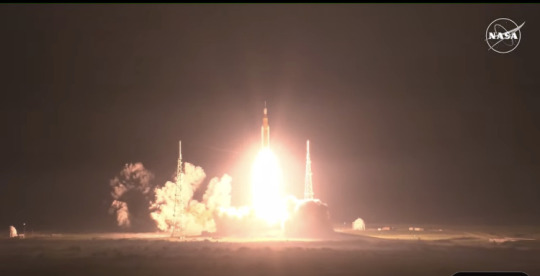
come back to us safely.❤️
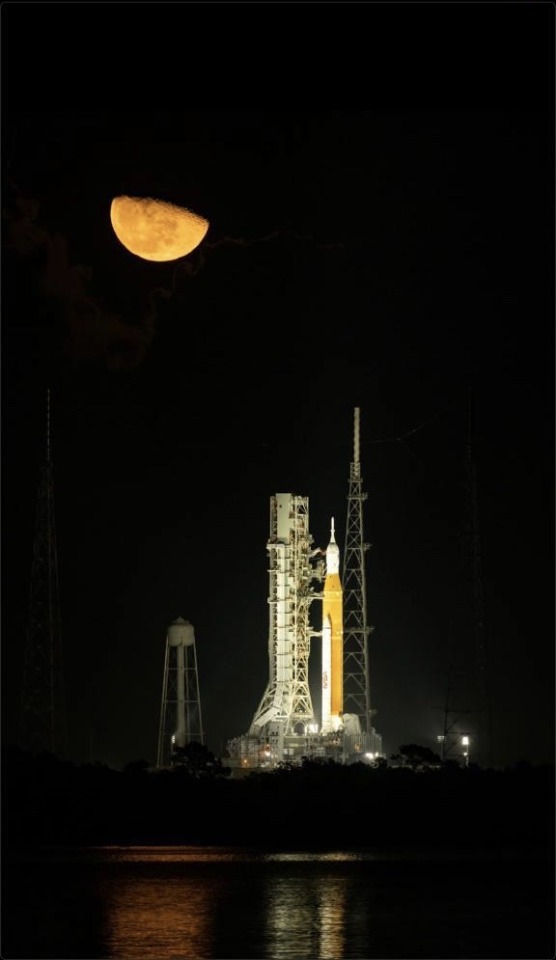
#artemis#artemis mission#nasa#thank you nasa#physics#space#outer space#study space#space and astronomy
4 notes
·
View notes
Text
youtube
If you missed the launch here’s my video of it
#Nasa#nasa#astronomy#Space#space#video#artemis mission#artemis launch#artemis 1 launch#Artemis 1 news#artemis 1 live — historic nasa launch scrubbed after rocket problems after thousands of fans waited to watch takeoff#Youtube
3 notes
·
View notes
Text





Some of the Best Moon & Earth Photos from NASA's Artemis I Mission


These are incredible. For all that everything sucks, we can still do some amazing things. And sometimes, those amazing things are going to space!
#there's still good in the world#sometimes as far away from it as possible#space#nasa#artemis#artemis mission#moon#science#photography
2 notes
·
View notes
Text

More Astronaut doodles
2 notes
·
View notes